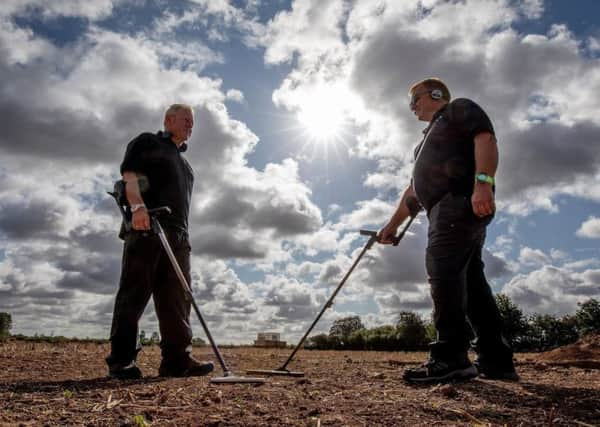Coins found by metal detectorists may point to '˜high status' settlement dating back to founding of York


An excavation at an undisclosed location in the region has unearthed remnants of a potentially “high status” 1st century settlement – the period in which the Romans were setting up in York.
The discovery was made two weeks ago – but its first signs revealed themselves in December 2015, when metal detectorist friends Paul King, Robert Hamer and Robin Siddle, of Priscan Archaeology, chanced upon a hoard of ancient coins.
Advertisement
Hide AdAdvertisement
Hide AdAfter their find and with continued information, social enterprise DigVentures decided there was enough interest to perform an excavation – but had no idea that what lay beneath the surface would stretch back as far as the reign of Roman emperor Vespasian.
Chris Casswell, head of fieldwork for DigVentures, said: “There is Roman activity in the area but this particular settlement has not been investigated before and was not known about until a couple of weeks ago. It’s quite exciting, and very early.
“It’s quite significant. The Romans came north of the Humber and set up shop in York around 71 AD and all of our finds are from that period. We are looking at something at the same time as they were doing that.”
So far, aside from the original coins, the excavation has discovered infant graves and a brooch about the size of a one pence piece. They have also found amphorae – jars or jugs – which could have been used to transport olive oil or wine from the Mediterranean.
Advertisement
Hide AdAdvertisement
Hide AdPottery, glass and tessera – material used in the construction of a mosaic – has also been found.
All of this points to a potentially “high status” settlement of wealth, with the possibility that villas were built at the site, said Mr Casswell, of Lincoln.
But future work could mean this analysis changes, he stressed.
He said: “We’ve gone a foot down and we’ve gone back 2,000 years, basically.”
Advertisement
Hide AdAdvertisement
Hide AdDigVentures was set up to give communities the chance to take part in excavations and connect them to their histories following cuts in the archaeology industry and universities. This most recent work has been supported by Heritage Lottery Fund cash, and more backing will be needed in order to revisit the site and investigate further.
Mr Casswell, 34, said that generally the further down you dig, the older the artefacts will be, giving a greater picture of a site’s significance.
York was founded in about AD 71 when the 5,000 Romans marched from Lincoln and set up camp, then referring to the city as Eboracum.
More than a quarter of a century had passed from the Romans establishing a province in southern Britain to their arrival in York – but it later became the heart of their empire under Septimius Severus and, briefly, Constantine the Great.